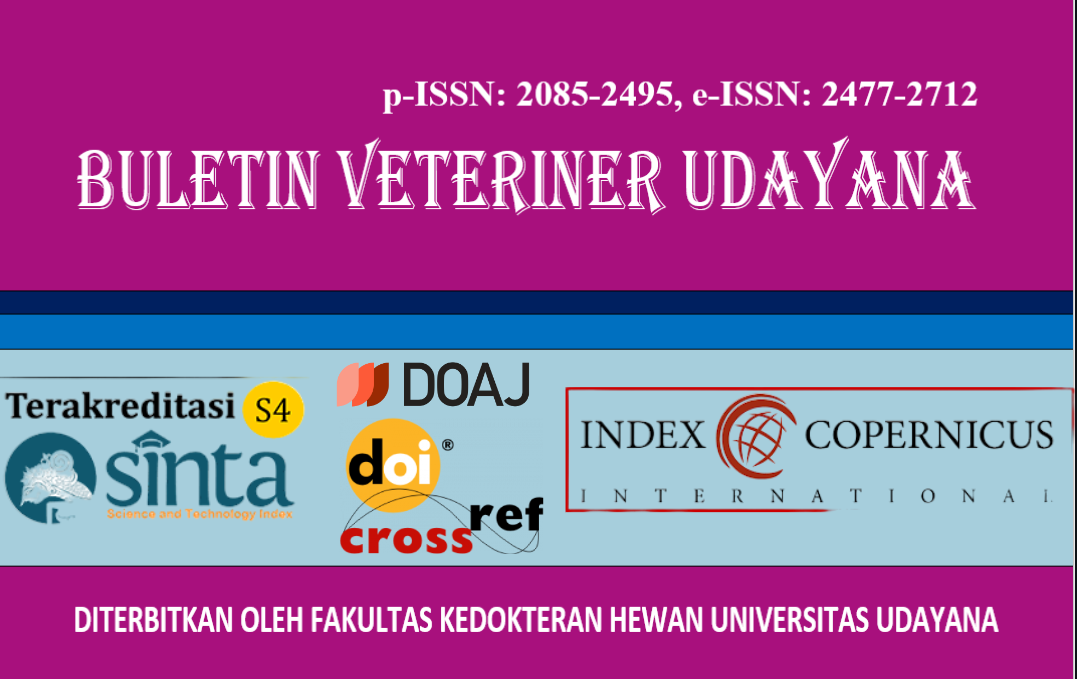SURGICAL TREATMENT OF UMBILICAL HERNIA IN A LOCAL CAT
DOI:
https://doi.org/10.24843/bulvet.2024.v16.i06.p07Keywords:
Umbilical hernia, reposition, local catAbstract
Umbilical hernia is an anatomical abnormality in which the muscles around the umbilicus fail to close properly, causing part of the intestine or omentum to enter the hernia sac through the abdominal cavity. The purpose of this article is to present a case study of congenital umbilical hernia in cats, including methods of diagnosis, management, and treatment. A 3-month-old male local cat weighing 1.5 kg came with a lump in the abdominal area, accompanied by a ring and mass that could be pushed back in. According to the owner, the lump had been there since the cat was born and continued to grow over time. Based on the results of physical, clinical, and supporting examinations in the form of barium contrast X-rays, the cat was diagnosed with an umbilical hernia which is a congenital disease with a Fausta prognosis. Treatment is carried out by surgically repositioning the contents of the hernia in the form of intestines into the abdominal cavity and suturing. Postoperatively, the antibiotic cefotaxime injection was given, followed by oral antibiotics, nonsteroidal anti-inflammatory drug, and topical antibiotic cream. On the 8th day after surgery, the case cat was declared cured with a dry and fused surgical wound, normal appetite, normal defecation and urination. It can be concluded that the surgical procedure and subsequent treatment successfully cured the hernia. Cats with umbilical hernias should be treated as soon as possible to prevent the hernia opening from getting bigger and causing conditions that endanger the cat's health.




